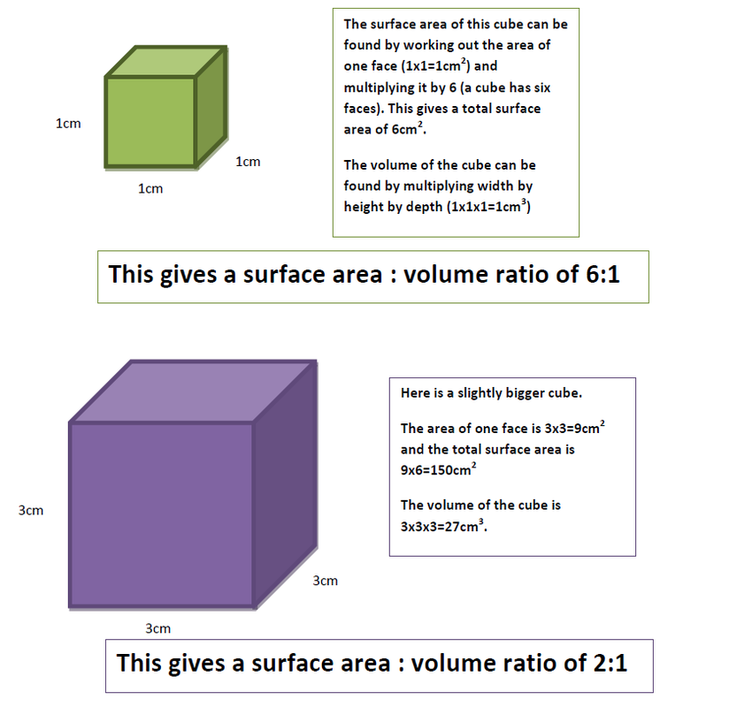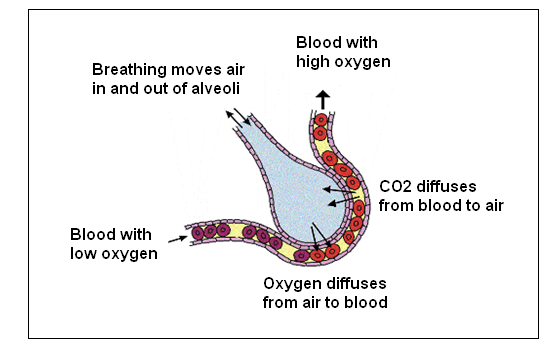Diffusion
Importance of the Substance Transportation
It is vital for substances to be transported in and out of a range of organisms.
These substances include:
- oxygen
- carbon dioxide
- water
- dissolved food molecules
- mineral ions
- urea
Cells must remove waste substances and to take in useful substances in order for the cell to function. These substances exchange through the cell membrane through diffusion, __osmosis __and __active transport. __
Surface Area Volume Ratio
Multicellular organisms__ require exchange surfaces and a transport system__ in order for substances to pass in and out of the cells.
The larger the surface area is compared to the volume, the quicker and more substances can pass through the membranes.
- Small and thin structures have a larger surface area compared to the volume.
- Large and thick structures have a smaller surface area compared to the volume.
Multicellular organisms have specialised exchange surfaces__ __- such as lungs, gills or villi in the intestines so that there is a larger surface area for the transport of substances to take place.
Surface area = Number of sides x (length x length)
Volume = length x length x length
So, as the volume increases, the surface area does not increase at the same rate. If there was a sugar cube that was 5g, it will have a larger SA:V ratio to 5g of powdered sugar.
Alveoli Adaptations
Alveoli__ __are highly adapted for gas exchange by diffusion between air in the lungs, and blood in the capillaries.
- They are folded in order to maximise the surface area to volume ratio.
- This allows more gas exchange to take place.
- The alveoli wall linings are moist, allowing oxygen and carbon dioxide to dissolve easily.
- It has__ thin walls__ so that the distance in which the gases have to diffuse across is short.
- Capillaries have a rich blood supply, which intensifies the concentration gradient.
Rate of Diffusion
The following factors have an affect on the rate of diffusion:
Surface Area
- The larger the surface area to volume ratio, the quicker the rate of diffusion takes place.
- The substance simply has more area to diffuse across, despite being the same volume.
Concentration Gradient
- The higher the concentration differences in the gradient, the higher the diffusion rate.
- If there is an equal concentration on both sides of the membrane, the rate of diffusion will be extremely slow.
- E.g. if the alveoli has a much higher concentration of oxygen than in the blood, then the oxygen will diffuse into the blood much quicker.
Diffusion Distance
- Shorter the distance between the material in which the substance is diffusing through, the faster the diffusion rate. It simply has a shorter journey to travel.
Temperature
- By increasing the temperature, the rate of diffusion increases as there is more energy in each particle.
- These particles will now bounce against each other more frequently.
Ficks Law
The rate of diffusion can be calculated using Fick’s Law:
__Rate of diffusion is proportional to: (surface area × concentration difference ) / thickness of membrane __
This will mean that the rate of diffusion will double if the surface area / concentration difference is doubled, or if the thick of membrane in which exchange takes place is halved.
- Based on Ficks Law, what will happen to the rate of diffusion if the surface area or concentration difference is doubled?
- Your answer should include: Diffusion / Double
Explanation: Rate of diffusion will double - What will happen to the rate of diffusion if the temperature is increased?
- Increase
Explanation: Increase, as the particles have more energy - What is the advantage of the alveoli’s thin walls?
- Short diffusion distance

